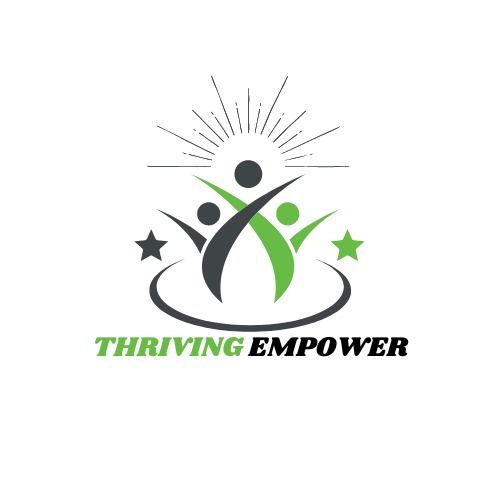Self discipline in 5 steps is not just about following strict routines or denying yourself pleasure. It isn’t about depriving yourself but about making conscious choices that align with your long-term goals and values, even when faced with temptations or difficulties.
A life where procrastination is just a distant memory, where you effortlessly stick to your workout routine or dedicate time each day for personal development.
Here I will explore the art of self discipline in 5 steps, how to develop it, harness its power, and release its rethink power in every aspect of your life.
How to be more self discipline in 5 steps?
To develop discipline, it is crucial to set clear goals and establish a structured routine. Start with small daily habits that contribute to your long-term goals, such as waking up early or exercising regularly.
By taking small steps towards your objectives every day, you build momentum and strengthen your discipline over time.
Pay attention to your thoughts, emotions, and behaviors, identifying patterns that may hinder your progress. Over time, these habits will become second nature, making it easier to stay disciplined. Here are a few steps of self discipline.
Acknowledge of Your Weakness

Acknowledging your weaknesses is the first step towards self-improvement. Understanding where you fall short allows you to take proactive measures to address those areas.
It allows you to confront the areas in your life that need improvement and empowers you to take control. By recognizing the impact of your weaknesses, whether it’s excessive social media use or lack of self control in certain situations, you can begin to make positive changes.
Being disciplined involves recognizing your shortcomings and actively working to overcome them. It requires a deep level of self-awareness and the willingness to confront uncomfortable truths about yourself.
By acknowledging your weaknesses, you open yourself up to opportunities for improvement and ultimately become a stronger, more resilient individual.
Writing down your weaknesses can serve as a tangible reminder of what you’re working towards. It’s a visual representation of where you currently stand and where you aspire to be.
Prepare for and Embrace the Negative Emotions
Negative emotions are a vital part of self-growth and development. It’s easy to fall back on familiar habits that provide temporary comfort, but true progress comes from challenging yourself and stepping out of your comfort zone.
These feelings act as signals that indicate areas in your life that need attention or change. Rather than seeing them as obstacles, view them as opportunities for self-reflection and improvement.
Self-doubt is a common negative emotion that many of us struggle with. Instead of viewing self-doubt as a weakness, you can reframe it as an opportunity for self-discovery and introspection.

By being kind to yourself during moments of sadness, anger, or fear, you can learn valuable lessons about your inner selves and how you interact with the world around you.
As author Matt Haig once said, Be kind to yourself in the midst of worry or anxiety. This shift in perspective can help you navigate through challenging emotions with greater ease and resilience.
Feeling lost quotes remind you that it’s okay to not have all the answers and to navigate through uncertainty.
Remove Temptation
Removing temptation from our lives is not a sign of weakness, but rather a strategic move to safeguard our self-discipline. Even the most disciplined individuals can succumb to temptation if constantly faced with it.
As humans, you are wired to seek pleasure and instant gratification, making it crucial to remove temptations that may derail your progress. By creating an environment free of triggers and distractions, you set yourself up for success and make it easier to stay on track towards your goals.
One way to effectively remove temptation is by setting yourself up for success. Create an environment that supports your goals and minimizes triggers that may lead you astray.
Whether it’s removing unhealthy snacks from your pantry or limiting your time on social media, taking proactive steps can make it easier to resist temptation in the moment. Self doubt quotes can serve as powerful reminders of the dangers of succumbing to temptation.
For instance, Eleanor Roosevelt once said, No one can make you feel inferior without your consent. This quote underscores the idea that you have control over how you perceive yourself and should not let external temptations or criticisms dictate your self-worth.
Remember, a moment of indulgence often leads to feelings of regret, so preventing temptations from arising can save you from unnecessary guilt.
Make A Plan
Strengthening your self discipline is by creating a strategic plan. Start by setting specific goals and outlining the steps you need to take to achieve them. By breaking down your larger objectives into manageable tasks, you can track your progress and stay motivated.
Consider implementing rewards for yourself as a way to reinforce positive behavior. For example, treat yourself to something special if you successfully resist the urge to indulge in unhealthy habits.
Identify potential obstacles and develop strategies to overcome them. If you know that tempting treats like cookies or donuts are a common presence in your workplace, prepare ahead of time by bringing healthy snacks or mentally rehearsing how you will say no.
By anticipating challenges and having a clear plan in place, you’ll be better equipped to stay focused on your goals and maintain your self-discipline over time. Sounds great unless I’m trying to lose weight! On top of that, they usually set the goodies near me.
Trying to avoid donuts when you’re tired and it’s a Monday morning is a challenge! Because of this, I try to keep healthier treats on my desk. Not completely healthy but at least not as bad as the donuts.
When you feel tempted, eat a treat from your desk drawer instead. This is just an example, but try to think of all the things that can go wrong, and plan for it.
Develop New Behaviors
Change doesn’t happen overnight. Consistency is key in forming lasting habits that stick. Start small and gradually build up your new behavior over time, celebrating each milestone along the way.
One great strategy for developing new behaviors is visualization. Take the time to imagine yourself successfully representing the behavior you want to adopt.
Visualize the positive outcomes and effects it will have on your life, creating a sense of motivation and determination within you.
Accept discomfort as a sign of progress, knowing that stepping outside of your comfort zone is where real growth happens.
Conclusion
Self-discipline is a key trait that can significantly impact your personal and professional lives. By preparing self-discipline, individuals can achieve their goals more effectively, stay focused on tasks at hand, and overcome obstacles with resilience.
By following the self discipline in 5 steps outlined in this article, acknowledge your weakness, accepting the negative emotions, making plans, practicing self-care, and being persistent , you can nurture self-discipline and make positive changes in our life.

